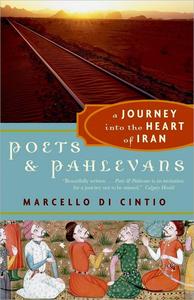Poets and Pahlevans A Journey into the Heart of Iran

Free Download Poets and Pahlevans: A Journey into the Heart of Iran by Marcello Di Cintio
English | August 15, 2006 | ISBN: 0676977324, 0676977332 | True EPUB | 304 pages | 2 MB
Marcello Di Cintio prepares for his "journey into the heart of Iran" with the utmost diligence. He takes lessons in Farsi, researches Persian poetry and sharpens his wrestling skills by returning to the mat after a gap of some years. Knowing that there is a special relationship between heroic poetry and the various styles of traditional Persian wrestling, he sets out to discover how Iranians "reconcile creativity with combat."
From the moment of his arrival in Tehran, the author is overwhelmed by hospitality. He immerses himself in male company in tea houses, conversing while smoking the qalyun or water pipe. Iranian men are only too willing to talk, especially about politics. Confusingly, he is told conflicting statements-that all Iranians love George Bush, that all Iranians hate George Bush; that life was infinitely better under the Shah, that the mullahs swept away the corruption of the Shah’s regime and made life better for all.
Once out of Tehran, he learns where the traditional forms of wrestling are practised. His path through the country is directed by a search for the variant disciplines and local techniques of wrestling and a need to visit sites and shrines associated with the great Persian poets: Hafez, Ferdosi, Omar Khayyám, Attar, Shahriyar and many others. Everywhere his quest leads him, he discovers that poetry is loved and quoted by everyone from taxi-drivers to students.
His engagement with Iranian culture is intimate: he wrestles (sometimes reluctantly) when invited, samples illegal home-brew alcohol, attends a wedding, joins mourners, learns a new way to drink tea and attempts to observe the Ramazan fast, though not a Muslim himself. Though he has inevitable brushes with officialdom, he never feels in danger, even when he hears that a Canadian photo-journalist has apparently been beaten to death in a police cell during the author’s visit. The outraged and horrified reaction of those around him to this violent act tightens the already close bond he has formed with the Persians.
His greatest frustration is that he is unable to converse freely with Iranian women aware that an important part of his picture of Iran is thus absent. Yet the mosaic of incidents, encounters, vistas, conversations, atmospheres and acutely observed sights, smells and moments creates a detailed impression of a country and society that will challenge most, if not all, preconceptions.
